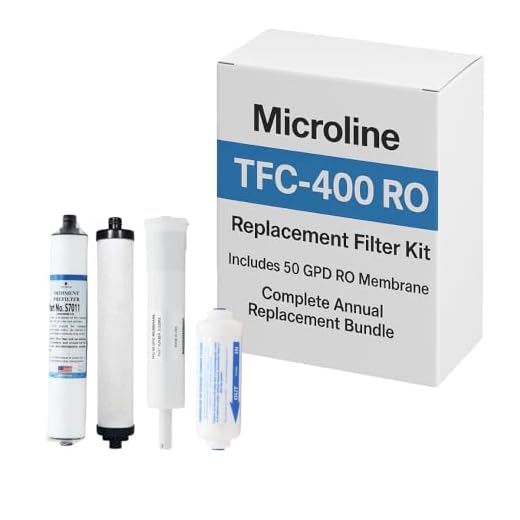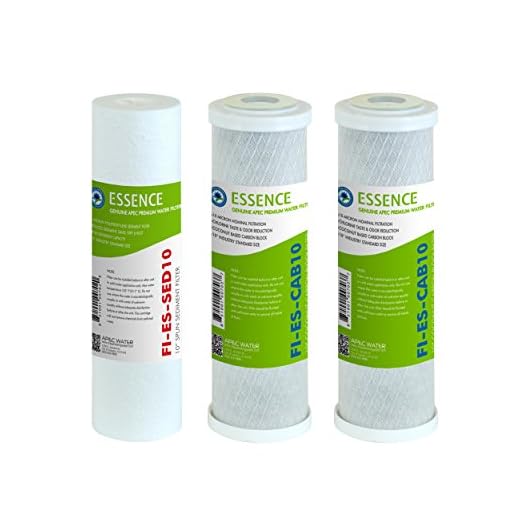




Maintenance Tips for Longevity
To ensure the longevity of a reverse osmosis system, regular maintenance plays a critical role. Monitoring the pressure settings can help avoid unnecessary strain on the system. Periodically check all connections for leaks, as even a small drip can lead to significant water loss over time. Keeping the system free from dust and debris can also enhance its efficiency. Installation of additional pre-filters can further protect the membranes from contaminants, prolonging their lifespan.
One of the most vital aspects of maintenance is establishing a routine for filter replacements. Each filter has a recommended replacement schedule, which varies depending on usage and water quality. Neglecting this schedule may result in decreased system performance and poor water quality. Additionally, routine sanitization of the system helps prevent the growth of bacteria and ensures clean output. Users should consult the manufacturer’s guidelines to align maintenance practices with the specific needs of their system.
Regular Filter Replacement Schedule
To ensure optimal performance of a reverse osmosis system, adhering to a regular filter replacement schedule is essential. Typically, pre-filters and post-filters should be replaced every 6 to 12 months, depending on the water quality and usage. Membrane replacements may be required every 2 to 5 years. Neglecting these replacements can lead to reduced water quality, lower flow rates, and increased pressure on the system, ultimately shortening its lifespan.
Establishing a filter replacement routine can help mitigate potential issues before they arise. Many systems come with a maintenance reminder or sticker that can be a handy tool for users. Keeping track of the replacement dates allows you to enjoy consistent water quality and efficient system operation. Addressing replacements promptly can also prevent costly repairs in the long run, making routine maintenance an important part of ownership.
Common Issues with Reverse Osmosis Systems
Reverse osmosis systems can encounter several challenges that may affect their efficiency. A common issue is low water pressure, which can hinder the filtration process. Factors such as clogged filters or a malfunctioning pump can contribute to this problem. If left unaddressed, reduced water pressure might lead to unsatisfactory water output and lower purification effectiveness.
Another frequent concern involves leaks within the system. These leaks can arise from loose fittings, damaged membranes, or worn-out seals. Identifying the source of a leak is crucial, as it can lead to water waste and potential damage to surrounding areas. Regular inspection and maintenance can help in promptly detecting such issues, ensuring that the system continues to operate smoothly.
Troubleshooting and Solutions
When faced with issues in a reverse osmosis system, the first step is to identify the source of the problem. Common signs may include a decrease in water flow, unusual noises, or the presence of cloudy water. Checking for clogs in the pre-filters or inspecting the post-filter for wear can often reveal simple solutions. Ensuring that the membranes are not fouled or damaged is also crucial. Regular maintenance checks promote early detection, which can save time and resources.
If problems persist and basic checks do not yield results, it may be necessary to consult the manufacturer’s manual for troubleshooting guidance specific to the model. Many systems also come equipped with diagnostic features to help pinpoint faults. For more complex issues, seeking professional assistance might be the best course of action. Maintaining open communication with the manufacturer can provide valuable insights into common issues and their remedies.
Cost Analysis of Reverse Osmosis Systems
When considering a reverse osmosis system, it’s essential to evaluate the initial investment alongside potential long-term savings. Prices for these systems can vary significantly depending on brand, features, and installation requirements. Homeowners should account for the purchase of the unit itself, any necessary installation fees, and additional components like storage tanks or pumps. While some may find the upfront costs daunting, many systems offer energy-efficient designs that can help offset water utility bills over time.
Recurring expenses also play a crucial role in cost analysis. Regular maintenance is a factor that should not be overlooked, as filter replacements and membrane changes are necessary for optimal performance. These costs, while not negligible, are often lower than buying bottled water or relying on less effective purification methods. In the long run, investing in a quality reverse osmosis system can lead to substantial savings, making it a financially sound choice for many households.
Initial Investment vs. Long-Term Savings
Choosing a reverse osmosis system often involves weighing the initial costs against potential long-term savings. The price of these systems can vary significantly based on features and capacity. While upfront expenses may seem steep, especially for higher-end models, they can lead to reductions in bottled water purchases and lower utility bills. Over time, the investment in a quality system can yield substantial savings, making it a financially sound decision for many households.
Consider that maintenance costs are also a factor in the overall expense analysis. Regular filter replacements add to ongoing expenses, but these are typically much lower than the recurring costs associated with buying bottled water. Additionally, some systems may enhance the longevity of plumbing fixtures and appliances by reducing mineral buildup. Balancing the initial investment against these long-term advantages helps clarify the financial implications of adopting a reverse osmosis solution.
FAQS
What is a reverse osmosis system?
A reverse osmosis system is a water purification technology that uses a semipermeable membrane to remove contaminants from water by applying pressure, allowing only clean water to pass through while leaving impurities behind.
How often should I replace the filters in my reverse osmosis system?
It is recommended to replace the filters in your reverse osmosis system every 6 to 12 months, depending on the system’s usage and the quality of the source water. Regular maintenance ensures optimal performance and water quality.
What are common issues that can occur with reverse osmosis systems?
Common issues include low water pressure, leaks, unusual noises, and poor water quality. These problems can often be diagnosed and resolved with some basic troubleshooting.
How can I troubleshoot my reverse osmosis system?
To troubleshoot, check for leaks, ensure all connections are tight, inspect the filters for clogs, and verify that the water pressure is adequate. If problems persist, consult the manufacturer’s guidelines or seek professional assistance.
Is investing in a reverse osmosis system worth it in the long run?
Yes, while the initial investment may be higher compared to other water filtration systems, reverse osmosis systems can provide significant long-term savings by reducing the need for bottled water and minimizing water waste, along with improving water quality.
Related Links
How to Maintain Your Reverse Osmosis System for Optimal Performance
A Comprehensive Roundup of Popular Reverse Osmosis Brands
5 Key Benefits of Using a Reverse Osmosis Water Filter
The History of Reverse Osmosis Technology in Water Filtration

